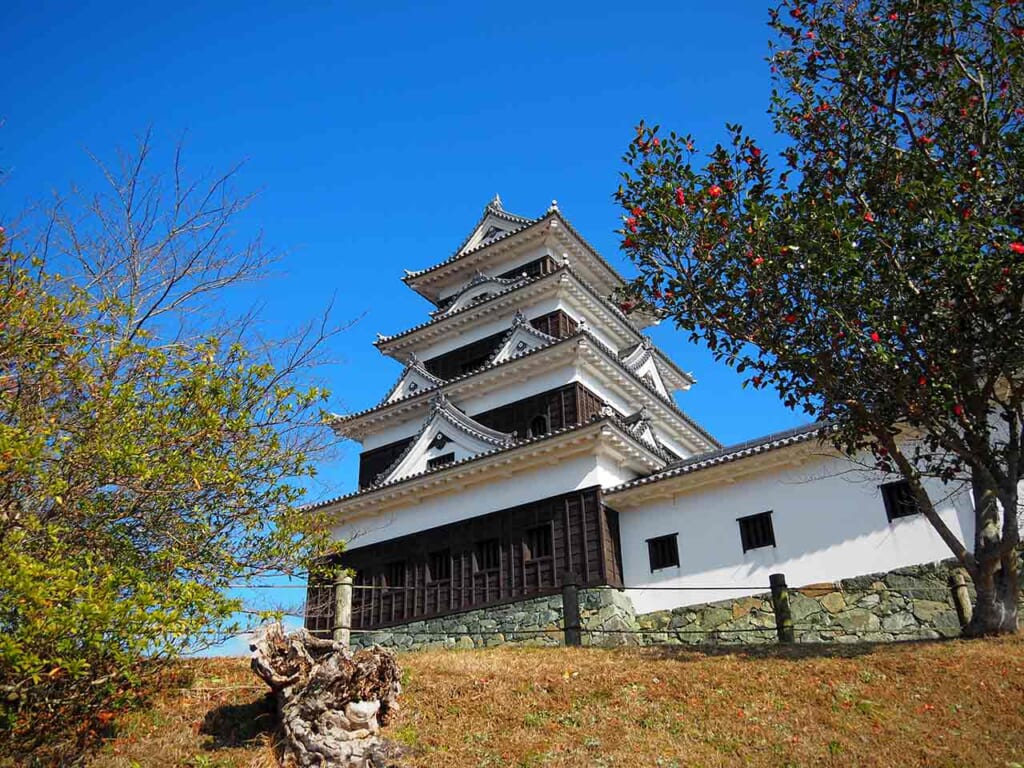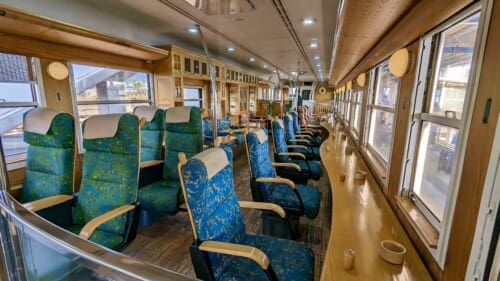If you’re looking for a unique travel experience in Japan, then Shikoku should be high on your bucket list! As the smallest of Japan’s main islands, Shikoku is known for its wild landscapes, ancient temples, and charming historic towns. One of the region’s main attractions is the Shikoku Henro (四国遍路), a circular pilgrimage of 88 temples associated with the Buddhist monk and Shingon founder Kukai. Rest assured, you don’t have to walk the entire 1,200 km of the path to make the most out of your trip in the region! The northern coast of Shikoku alone, which spans the two prefectures of Kagawa and Ehime, has plenty to offer both to the casual tourist and the tireless trekker. Let’s see some of the best destinations to add to your northern Shikoku itinerary!
Exploring Kagawa Prefecture
Although Kagawa (香川県) is Japan’s smallest prefecture, you shouldn’t pass up on this little gem of a region. Located in the northeastern part of Shikoku, Kagawa is not only it’s blessed with stunning natural sceneries, but it is also home to a wealth of historical sites and cultural attractions.
Ritsurin Garden: A Relaxing Visit to the Three Most Beautiful Gardens of Japan
When traveling in Japan, one thing is certain: a great itinerary would not be complete without a visit to one of its magnificent gardens. Takamatsu, on the northern coast of Kagawa Prefecture, is home to the Ritsurin Garden (栗林公園), one of the largest and most beautiful gardens in Japan. With a history dating back to the 16th century, this garden was awarded three stars in the Michelin Green Guide Japan, and it’s recognized as an important cultural property.

Kagawa boasts a strong bonsai culture, and this garden bears witness to it: during your relaxing stroll through the garden’s greenery, you’ll be surrounded by over a thousand bonsai pine trees pruned to perfectionーa spectacle to behold in every season. Wander through the garden’s many paths and discover its ponds, streams, and landscaped hills, all set against the green backdrop of Mt. Shiun. If you want to see the garden from a different perspective, we recommend a Wasen boat ride around Nanko Pond. During the 30-minute trip, you’ll have the opportunity to learn about the history of the garden from one of the garden’s boat guides. If you’re feeling parched after your stroll, make a stop at Kikugetsutei, an Edo-era teahouse overlooking Nanko Pond.


Spring is a great season to visit, with about 320 cherry trees blooming throughout the park, but autumn is no less spectacular with the Momiji maple trees turning all shades of yellow and red.
| Admission fee: 410 yen for adults, 170 yen for children |
| Hours: The garden is always open from 7 am to 5 pm, but the hours vary depending on the season. |
| Directions: The garden is a 3 minutes walk from JR Ritsurin Koen Kitaguchi Station and a 10 minutes walk from Kotoden Ritsurin Koen Station. |
 Ritsurin Garden
Ritsurin Garden
PARK- 1-chome-20-16 Ritsurincho, Takamatsu, Kagawa 760-0073, Japan
- ★★★★☆
Konpirasan: Go on a Short Pilgrimage for a Taste of the Pilgrim’s Life
Located in the western part of Kagawa Prefecture, Kotohira-gu Shrine (金刀比羅宮), also known as Konpirasan, is one of the most important Shinto shrines in Japan. As is often the case, the shrine complex contains elements of both Shinto and Buddhism, the latter mainly in the form of statues and paintings that are now kept in the shrine’s museum.
What sets Konpirasan apart from other shrines is the climb: in fact, you’ll have to ascend a challenging 1,368 steps to reach the innermost shrine, which is located at 521 meters, halfway to the top of Mt. Zozu. But don’t let that discourage you, as this uphill pilgrimage from Kotohira Station shouldn’t take much more than half an hour and comes with its fair share of attractions.

About a quarter of the way up, you’ll find the majestic Omon Gate (大門), which marks the entrance to the shrine and opens up a path where you’ll pass candy shops, statues, the Kami Tsubaki cafe where you can stop for a cup of tea or coffee, and so many other interesting sights that you’ll be at the top before you know it.
The scenery from up top makes it all worth it! The view of Kotohira Town is stunning, even on rainy days. This little pilgrimage is a perfect opportunity for travelers to experience a truly special side of Japan. If you want to learn more about the journey up to the Konpirasan, make sure to read our detailed reportage on the Konpirasan Pilgrimage!
| Admission fee: Free |
| Hours: The shrine grounds are always open. Some structures including the art museum open from 8:30 am to 5 pm. |
| Directions: From Tokyo, you can take the overnight Kotobus from Shinjuku Bus Terminal (about an 11-hour bus ride). From Takamatsu, take the JR Dosan Line to Kotohira (about 35 minutes by limited express, and about 50 minutes by rapid train). |
Exploring Ehime Prefecture
Ehime (愛媛県) is located in the northwestern part of Shikoku. The region is famous for its stunning coastline, rich natural landscapes, and old townscapes, all of which are home to a plethora of sightseeing spots, making it a great unconventional destination for all types of travelers.
Uchiko: Visit Edo-era Townhouses and Merchant Houses of Ehime
Uchiko (内子町) is a charming small town in southwestern Ehime Prefecture. Once a thriving wax manufacturing center, the town still retains its traditional Edo-era townhouses and merchant mansions in the Yokaichi-Gokoku district (八日市・護国町並保存センタ). As you walk along the 600-meter-long street filled with historic buildings, museums, shops, and cafes, it’ll feel like you’re traveling back in time; enjoy exploring at your own pace to get a sense of how the city used to look back then.

Another must-see in Uchiko is the Uchiko-za Kabuki Theater (内子座). This magnificent structure, still fully operational, has been beautifully preserved and still rivals the grandeur of the more famous Kabuki theaters in Tokyo and Osaka. Visitors may explore the theater from the inside and observe its distinctive architecture, and a variety of shows are still held throughout the year.
| Directions: Take the JR Yosan Line from Matsuyama Station to Uchiko Station (25 minutes by limited express train and 55 minutes by local train). |
Ozu: A Picturesque Castle Town and Elegant Japanese Villa in Ehime
Ozu (大洲) is a small castle town in western Ehime Prefecture. The town’s main attraction, it goes without saying, is Ozu Castle (大洲城), which stands on a hill overlooking the Hijikawa River and dates back to the 14th century. Over the ages, it has been destroyed and rebuilt, and to this day only four of the original 18 watchtowers remain. Today, you can still visit the castle and its exhibition on the complex’s history and renovation. On top of that, from the castle’s top level, you’ll get a beautiful view of the city, the river, and the surrounding mountains.

Another highlight of Ozu is Garyu Sanso (臥龍山荘), a traditional Japanese-style villa perched on a cliff overlooking the Hijikawa River. An elegant example of Japanese architecture, the building is beautiful inside and out: after a visit to the interior, where you’ll have a chance to appreciate the ingenious workmanship that went into its spaces. We recommend heading out to the garden to take in the view of the trees and mountains in the distance. The garden also houses a tea house where you can take a well-deserved break while sipping on some delicious infusions.
On the way from the villa to downtown, you’ll pass some more traditional buildings from the Meiji, Taisho, and Showa eras, letting you get a taste of authentic Japan.
| Directions: Take the JR Yosan Line from Matsuyama Station to Iyo-Ozu Station (about 40 minutes by limited express train and 90-110 minutes by local train). |
How to Get to Northern Shikoku
Northern Shikoku offers easy access to major cities by air, rail, and road. The region has several domestic airports, with Matsuyama Airport serving Ehime Prefecture and Takamatsu Airport serving Kagawa Prefecture.
It’s also well connected to the main island of Honshu by JR trains: you can even use your JR pass to take the Shinkansen bullet train to Okayama Station, then transfer to one of the many trains to Shikoku. If you want to get off the beaten track and visit smaller towns, join the Shikoku Henro pilgrimage, or hike in remote areas, renting a car is by far the most convenient option.
Northern Shikoku is a wonderful alternative for people seeking to experience nature’s serene beauty while also getting a taste of authentic Japan. Because this region is not on many people’s bucket lists yet (and wrongfully so), Ehime and Kagawa prefectures are sure to provide the peaceful retreat that will make your trip to Japan even more special. So, we hope you take on the 1,200km Shikoku Henro or go city hopping to see the explore the best of each town’s attractions!













No Comments yet!